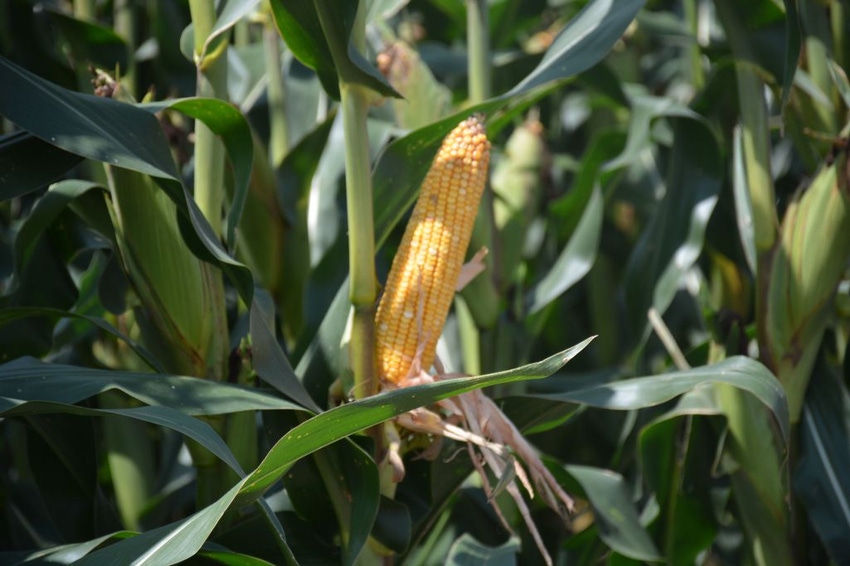
Ron Heiniger has proclaimed 2016 as “the year of the corn” because he believes this is the year North Carolina farmers will make a statewide record yield of 150 bushels per acre.
“I’m saying right here today we are going to have a statewide record corn yield of 150 bushel to the acre. That means we have to have good corn not just in one part of the state, but every place in the state. Furthermore, I’m going to say that somebody in this state, probably sitting in this room quite frankly, is going to make 400 bushels per acre corn and record it in a yield contest,” said Heiniger, the North Carolina State University Extension corn specialist at an Extension Road Show production meeting at the Vernon James Research and Extension Center in Plymouth January 28.
At the meeting, Heiniger laid out his evidence for why he believes 2016 will be a record year for corn farmers in North Carolina. The main driving factor, Heiniger stressed, is the El Nino weather pattern which should make for ideal corn growing conditions in the state.
“The weather forecast is money in the bank right now. This is an El Nino season,” Heiniger said.
El Nino means warm temperatures in the central Pacific and it impacts the weather globally. For North Carolina, it makes for a wet, cool fall and winter extreme, an extreme warm and dry spring and an extreme dry late summer. For corn, this is a good thing, Heiniger said.
“One of the most difficult things we deal with in corn in North Carolina is getting it in the ground. It’s wet and it’s cold. It’s been that way for the last six seven years, yet we made decent crops,” Heiniger said.” If we ever could get a decent spring, where we could get corn in the ground and get it up uniformly and off to a great start, then look at what we can do with yield. Well, this is the year to do it because that’s what’s heading our way is a warmer, dryer spring.”
In fact, Heiniger sees a warm and dry April and May in North Carolina which is perfect corn planting weather. “I think it gives way to an ideal June,” he said. “Pick up that rain in June all the way to pollination in corn, perfect corn growing weather. And then, finally it turns hot and dry in July into August when you’re going to be picking your corn, hopefully.”
Right hybrid is critical
In the meantime, Heiniger said selecting the right hybrid is critical to achieve top yields.
“Every company has a hybrid that will make those high yields. Your job is to find it,” Heiniger said.
A key driver for achieving top yields is uniform emergence and making sure the corn emergences on the same day in the same healthy condition, Heiniger stressed. “The good news is we can do something about this, and it’s not going to cost very much to do it. Plant a hybrid that has the best emergence rating that you can under difficult conditions,” Heiniger advised.
Heiniger also encouraged farmers to plant their seeds deeper, possibly 2.5 inches deep rather than 1.5 inches.
“This seed can tolerate cold or wet; it can tolerate hot or dry, but it doesn’t like change,” Heiniger said. “For that first two to three days after you put it in the ground, you want it to be as uniform in temperature and as uniform in moisture as you can make it. The deeper you plant it, the more uniform temperature and moisture become.”
Fertility management is certainly critical for achieving top yields, and Carl Crozier, Extension soil management specialist, said in high yield systems, there is a temptation to add more and more fertilizer. In many cases, the extra fertilizer isn’t needed.
“I can’t show you data that shows if we add more fertilizer, we get higher yields. In many cases, that yield just flattens off,” Crozier said.
With starter fertilizers, there is the danger of putting out too much too close to the plant, Crozier said. To avoid salt damage to corn, N.C. State has maximum starter fertilizer recommendations.
“If it’s a two by two band, the most we’d like to see in that band of your most soluble ingredients is 80 pounds; that would be the total of the nitrogen, the potash and the sulfur. If you want to put out more nutrients than that you can do it, but I think you should separate it farther away from the seed than that two by two band. If you’re using an in- furrow application, that’s a lot closer than a two by two band, so that rate ought to be lower,” Crozier said.

On hand for the Road Show Production Meeting at the Vernon James Research and Extension Center were from left Hyde County Extension Agent Andrea Gibbs, Washington County Extension Agent Anna-Beth Williams, Tyrrell County Extension Agent Clayton Butcher, and seated, Beaufort County Extension Agent Rod Gurganus and Area Consumer Horticulture Agent Gene Fox.
About the Author(s)
You May Also Like






